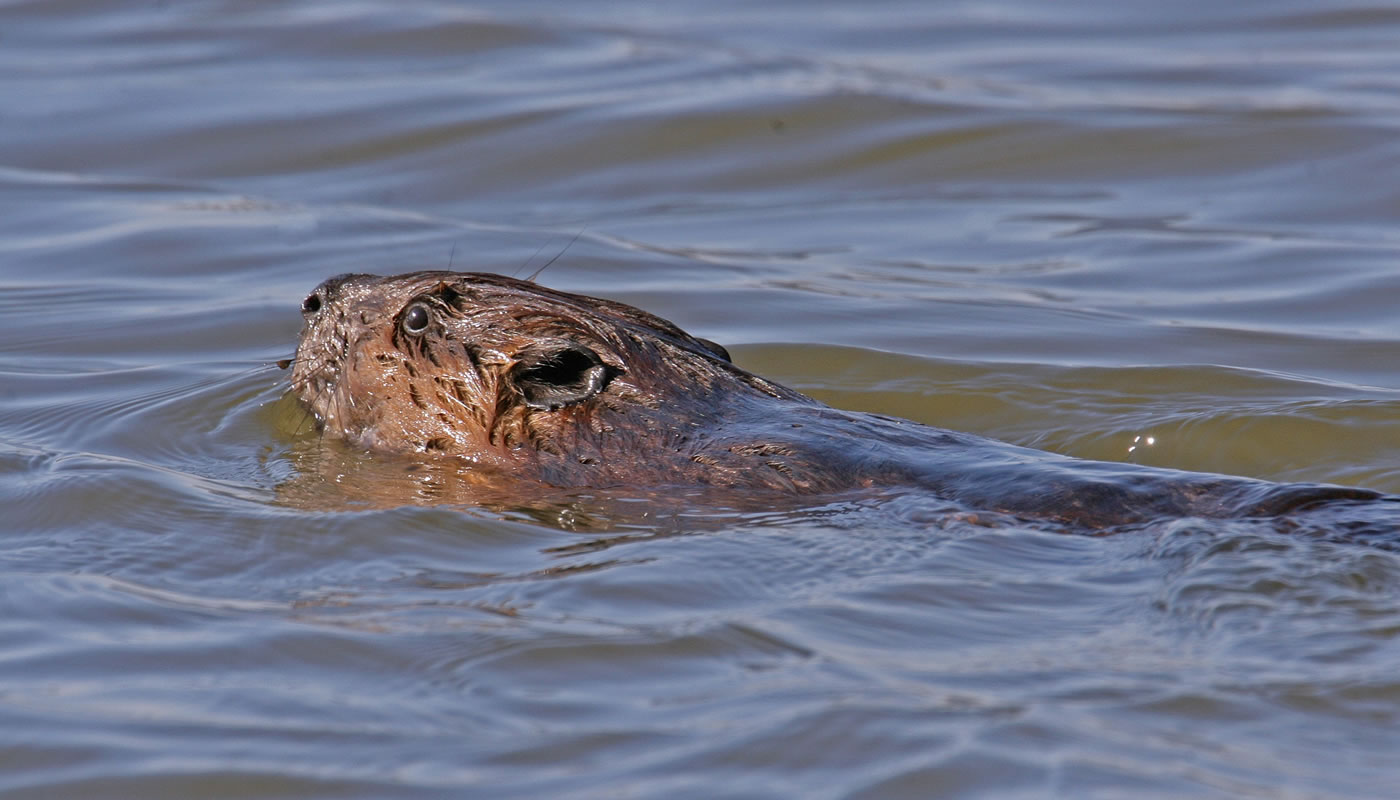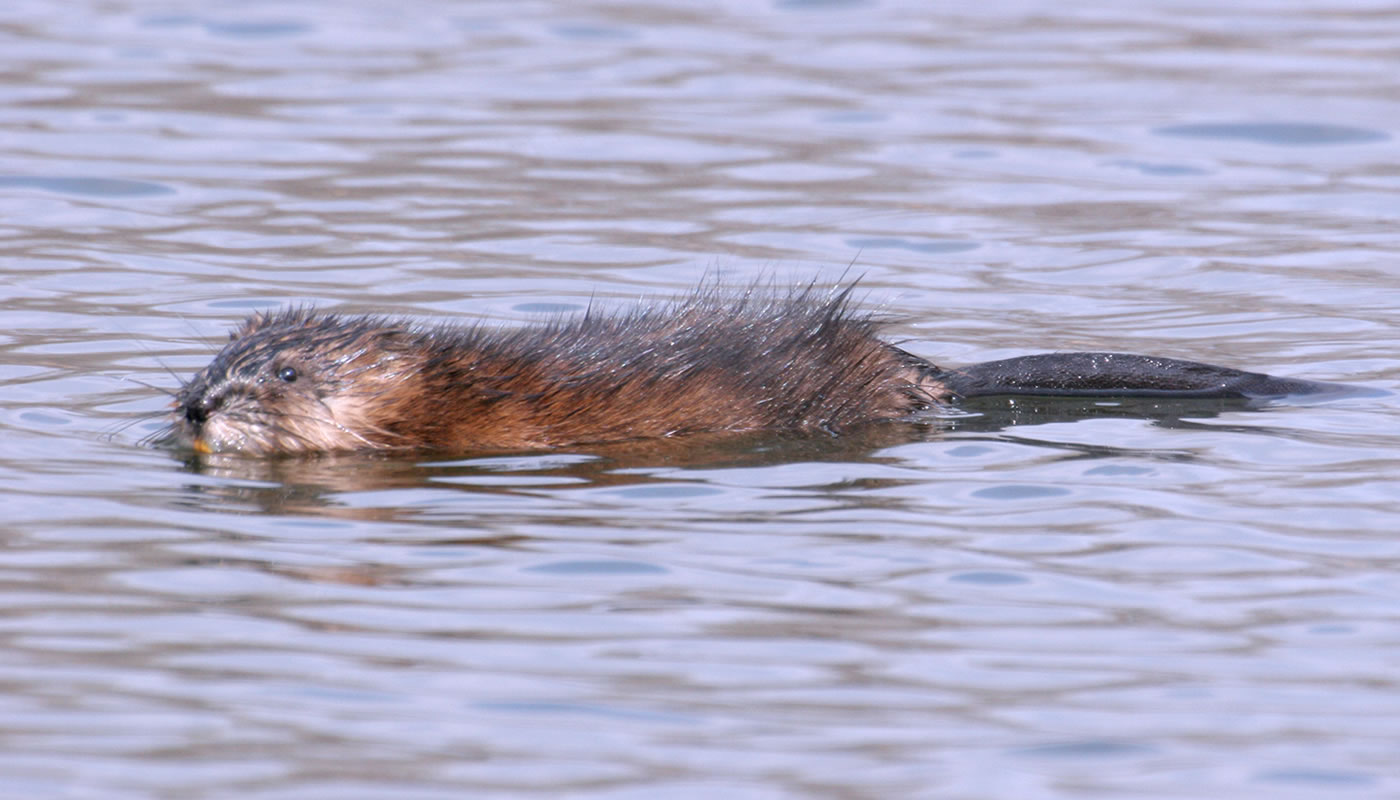If you’ve ever visited Longjohn Slough on the Little Red Schoolhouse Nature Center grounds you’ve probably seen the permanent resident lodging of the American beaver and muskrat. With warming temperatures and a little patience, you may spot these critters swimming near their lodges and mounds!
While on land, beavers and muskrats are easy to tell apart, but it can be easy to confuse the two when they’re spotted in the water. You can usually see a muskrat’s whole body when it is swimming; however, you often can only see a beaver’s large wedge-shaped heads while they swim.

Here are some additional tips to help you identify these aquatic mammals.
The tale is the telltale sign: Muskrats have long, skinny tails with flat sides while beavers have wide, flat and paddle-shaped tails.
Size and color: Muskrats tend to only grow to about four pounds while beavers can grow to be about 40-50 pounds (some have been weighed at 90 pounds!). Both can have different shades of brown fur.
Tracks: Both have webbed hind feet adapted for swimming and their front feet are clawed designed for digging! Muskrats front feet appear to have only four-toes but they have a small fifth toe that is can be near impossible to see on tracks. Beaver’s front feet on the other hand have five distinct fingers.
Lodges, mounds and dams, oh my! Both of these animals build homes on water. Muskrat mounds tend to be smaller than a beaver’s residence, and built from marsh vegetation such as grasses, sedges and cattails but not larger sticks and branches. If the water is not stable—rivers for example—muskrats will burrow into nearby banks to make their homes. Beaver lodges tend to be larger and made of sticks, large branches, and lots of mud. If you see a dam constructed by sticks, you can be sure it’s a beaver’s home. A quick note: Just because you see a critter swimming near a beaver lodge does not mean you’ve spotted a beaver! Sometimes muskrats will cohabit a beaver lodge.
So, the next time you go exploring in the Forest Preserves, put your detective hats on and ask yourself: “Is it a beaver or muskrat?”

